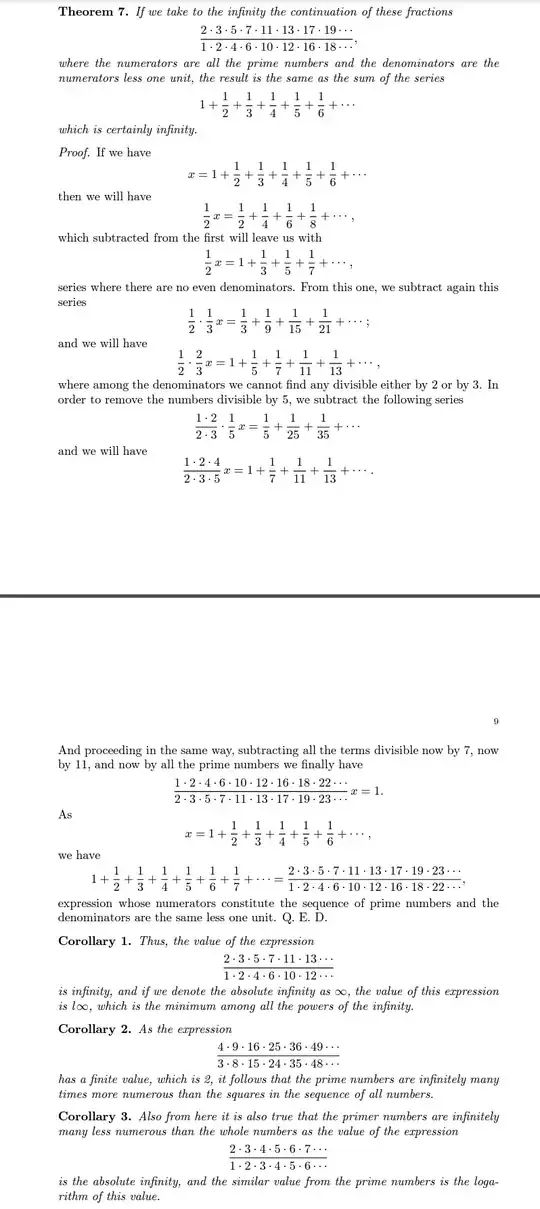Will someone please help me in understanding the claims of corollary $2$ and $3$?
I understand that corollary $2$ means for large $N$ there are more primes than squares in the interval $[1,N]$ which can also be seen alternatively using Prime Number Theorem. But I want to understand it from the Claim made in this corollary by Euler.
I know the proof given here is wrong and lacks rigor. Actually this proof was given by Euler. Can we anyway reach to corollary by bypassing the wrong proof ?
